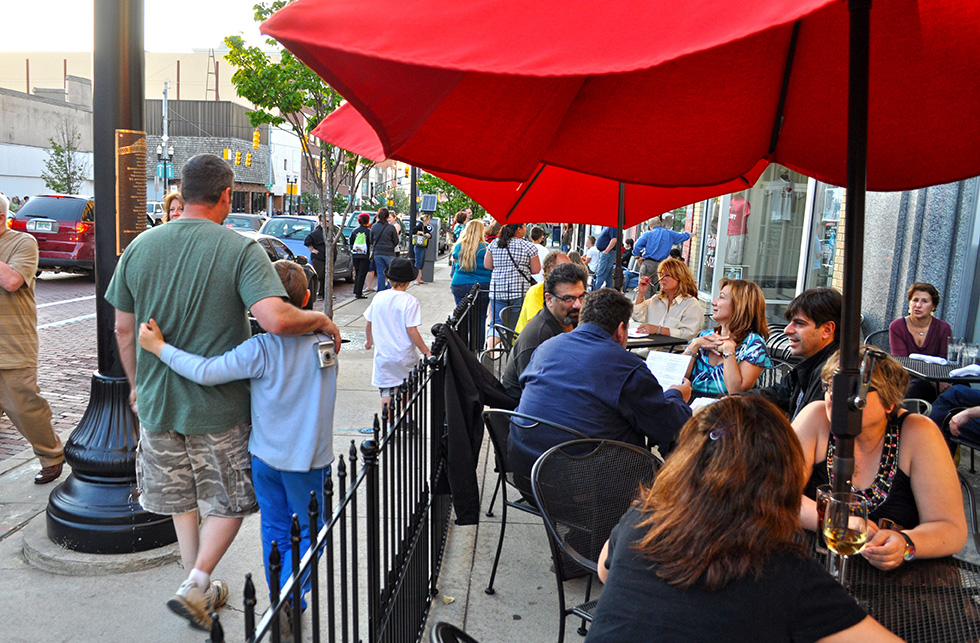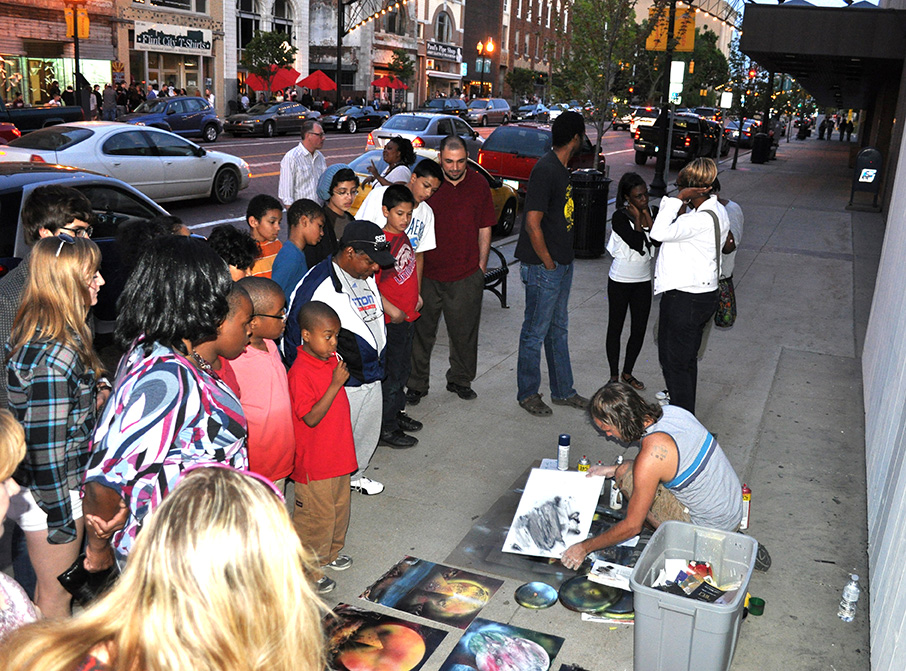Deepening our Commitment to Place:
An Agenda for Building Community Wealth
“Experts from around the world—in academic, business, and public sectors alike—agree that investing in communities is a critical element to long-term economic development in the 21st century”
– Economics of Place
The Michigan Municipal League and the communities we represent have spent more than a decade investing in placemaking strategies throughout the state, showing that “we love where you live” by lifting up what residents themselves love.
We have fought to give local leaders the flexibility and resources they need to serve their communities by advocating for municipal finance reforms and the preservation of local empowerment.
We have convened our members and partners to dive into the challenges posed by accelerating changes in our communities, whether those are economic, demographic, technological, or environmental, and to discuss how we can better equip local communities to tackle solutions to new needs and opportunities.
“We have traded [community] stability for growth for so long we now find ourselves without either.”
– Chuck Marohn, Strong Towns “Trading Stability for Growth” 2020.
All these efforts have emphasized the need for resilient local systems—for communities that can learn, innovate, adapt, and prosper even in the face of adversity. They have also revealed that traditional models of economic development, focused narrowly on growth rather than on broadly enjoyed prosperity, have fallen short: large segments of our population have been left out, while shocks like the housing finance crash of 2008 have reverberated across sectors and shown traditionally measured growth to be fragile. In reflecting on the uneven economic landscape of post-Recession recovery, the League has spent the past year pulling together threads from our past work into the concept of building community wealth. This model balances economic prosperity, sense of place, natural assets, and cultural substance. It also considers the importance of the safety, health, and well-being of our residents, as well as the ongoing process of learning over time. This model takes into account the human experience in our Michigan communities. This work must be local for many reasons – most importantly because every community has a different context.
Our planned rollout of this new framing was interrupted by another shock—the COVID-19 pandemic. Watching our members respond to this crisis has reinforced the need for new approaches and provided inspiration. Witnessing local leaders step up to serve in creative ways gives us confidence that we can collectively emerge from this crisis on a path to attain meaningful and equitable opportunity for our communities. That path is community wealth building.
The League’s Pillars of Community Wealth Building
We define community wealth building as strategies that build community and individual assets, creating resilient and adaptable systems to address social and economic needs. The League will work with our partners to provide thought leadership, training, advocacy, resources, and best practices to build community wealth through:
- Lifelong learning – the journey of education and training is recognized as spanning from young childhood through K-12 education and post-secondary pathways to ongoing opportunities for adult learners
- Public health – quality of life disparities are recognized and addressed while services are focused on increasing health impacts and fostering the human experience in public life
- Arts and culture –cultural identities, traditions and creative outputs are respected, celebrated and recognized as critical assets that build social fabric in a community.
- Financial security– municipalities, community institutions, families and individuals are fiscally healthy; economic systems ensure a community can be economically resilient and allow for the continued proliferation of prosperity
- Sustainability– natural resources are managed to ensure long-term sustainability of, and harmony between, the built and natural environment and leverage their worth as public assets
- Infrastructure –the fundamental facilities and systems serving a county, city, or other area, including the services and facilities necessary for its economy to function
In addition to these components, we see trust and belonging as a social and emotional fabric that ties the community members and these components together in an interdependent framework:
- Trust in neighbors, community leaders, local governments and the other partners and services in place to help our communities thrive is essential to achieving community wealth.
- Belonging to the community is what strengthens the tie between community members and the place. Without people, a place is just a physical object. Connecting people who support each other and themselves in a localized way brings a place to life and increases access to community resources and social networks.
“Community wealth building is about developing assets in such a way that the wealth stays local…helping families and communities control their own economic destiny.”
– Marjorie Kelly, Democracy Collaborative “What is Community Wealth Building and Why is it so Important?” 2014.
What is Community Wealth Building?
The League has developed our definition of community wealth building from our decades of work on policies and programs that promote people, authentic places, and sustainable economies, and from partners working around the country on related efforts. We know that community wealth building strategies are:
Incremental
Community wealth relies on continuous investments in people and place to achieve its aims and avoids reliance on “silver bullet” projects. The sum of individual investments of money, time, and energy create cumulative progress far greater than any single endeavor.
Constructive
Community wealth is measured in homes and hospitals; in storefronts and schools; in workshops and factories; in streets and services; in health and well-being. Investments catalyze a durable legacy that are enjoyed in the present and can be built upon by future community members.
Complex
Community wealth measures require the investment of social and community capital in addition to financial resources and recognizes the critical interaction of these as central to improving the human experience in the community. Community wealth building increases the local economic multiplier effect by reinvesting and maximizing dollars within a community, improving economic conditions and producing other public benefits.
Equitable
Community wealth strategies recognize and repair historical inequities. Inclusion, in all facets, is a core tenet, while exclusion (of individuals or groups) is identified as a violation of human rights and an inhibitor of growth. Community wealth empowers individuals, embraces their participation and celebrates their unique cultural contributions.
Participatory
Community wealth is created by building and securing assets in communities, ensuring that ownership of those assets is more broadly and equitably distributed among community members. Individual investments are made with an interest in long-term health, economic opportunity, and resiliency.
“Community Wealth is being raised bottom up, and is fundamentally committed to upgrading skills, growing entrepreneurs, increasing incomes and building assets.”
– Ross Baird, Bruce Katz, Jihae Lee, and Daniel Palmer, “Towards a New System of Community Wealth” 2019.

